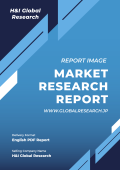1. Preface
1.1. Market Introduction
1.2. Market Segmentation
1.3. Key Research Objectives
2. Assumptions and Research Methodology
2.1. Research Methodology
2.1.1. List of Primary and Secondary Sources
2.2. Key Assumptions for Data Modelling
3. Executive Summary: Global Industrial Artificial Intelligence (AI) Market
4. Market Overview
4.1. Market Definition
4.2. Technology/ Product Roadmap
4.3. Market Factor Analysis
4.3.1. Forecast Factors
4.3.2. Ecosystem/ Value Chain Analysis
4.3.3. Market Dynamics (Growth Influencers)
4.3.3.1. Drivers
4.3.3.2. Restraints
4.3.3.3. Opportunities
4.3.3.4. Impact Analysis of Drivers and Restraints
4.4. COVID-19 Impact Analysis
4.4.1. Impact of COVID-19 on Industrial Artificial Intelligence (AI) Market
4.4.2. End-user Sentiment Analysis: Comparative Analysis on Spending
4.4.2.1. Increase in Spending
4.4.2.2. Decrease in Spending
4.4.3. Short Term and Long Term Impact on the Market
4.5. Market Opportunity Assessment – by Region (North America/ Europe/ Asia Pacific/ Middle East & Africa/ South America)
4.5.1. By Component
4.5.2. By Technology
4.5.3. By End-user
5. Global Industrial Artificial Intelligence (AI) Market Analysis and Forecast
5.1. Market Revenue Analysis (US$ Bn), 2016-2031
5.1.1. Historic Growth Trends, 2016-2021
5.1.2. Forecast Trends, 2022-2031
6. Global Industrial Artificial Intelligence (AI) Market Analysis, by Component
6.1. Overview and Definitions
6.2. Key Segment Analysis
6.3. Industrial Artificial Intelligence (AI) Market Size (US$ Bn) Forecast, by Component, 2018 – 2031
6.3.1. Hardware
6.3.2. Software
6.3.3. Services
7. Global Industrial Artificial Intelligence (AI) Market Analysis, by Technology
7.1. Overview and Definitions
7.2. Key Segment Analysis
7.3. Industrial Artificial Intelligence (AI) Market Size (US$ Bn) Forecast, by Technology, 2018 – 2031
7.3.1. Machine Learning
7.3.2. Natural Language Processing
7.3.3. Image Processing
7.3.4. Others
8. Global Industrial Artificial Intelligence (AI) Market Analysis, by End-user
8.1. Overview and Definitions
8.2. Key Segment Analysis
8.3. Industrial Artificial Intelligence (AI) Market Size (US$ Bn) Forecast, by End-user, 2018 – 2031
8.3.1. BFSI
8.3.2. IT & Telecom
8.3.3. Manufacturing
8.3.4. Retail & E-commerce
8.3.5. Healthcare
8.3.6. Government
8.3.7. Energy & Utility
8.3.8. Media & Entertainment
8.3.9. Others
9. Global Industrial Artificial Intelligence (AI) Market Analysis and Forecasts, by Region
9.1. Key Findings
9.2. Market Size (US$ Bn) Forecast by Region, 2018-2031
9.2.1. North America
9.2.2. Europe
9.2.3. Asia Pacific
9.2.4. Middle East & Africa
9.2.5. South America
10. North America Industrial Artificial Intelligence (AI) Market Analysis and Forecast
10.1. Regional Outlook
10.2. Industrial Artificial Intelligence (AI) Market Size (US$ Bn) Analysis and Forecast, 2018 – 2031
10.2.1. By Component
10.2.2. By Technology
10.2.3. By End-user
10.3. Industrial Artificial Intelligence (AI) Market Size (US$ Bn) Forecast, by Country, 2018 – 2031
10.3.1. U.S.
10.3.2. Canada
10.3.3. Mexico
11. Europe Industrial Artificial Intelligence (AI) Market Analysis and Forecast
11.1. Regional Outlook
11.2. Industrial Artificial Intelligence (AI) Market Size (US$ Bn) Analysis and Forecast, 2018 – 2031
11.2.1. By Component
11.2.2. By Technology
11.2.3. By End-user
11.3. Industrial Artificial Intelligence (AI) Market Size (US$ Bn) Forecast, by Country, 2018 – 2031
11.3.1. Germany
11.3.2. UK
11.3.3. France
11.3.4. Italy
11.3.5. Spain
11.3.6. Rest of Europe
12. Asia Pacific Industrial Artificial Intelligence (AI) Market Analysis and Forecast
12.1. Regional Outlook
12.2. Industrial Artificial Intelligence (AI) Market Size (US$ Bn) Analysis and Forecast, 2018 – 2031
12.2.1. By Component
12.2.2. By Technology
12.2.3. By End-user
12.3. Industrial Artificial Intelligence (AI) Market Size (US$ Bn) Forecast, by Country, 2018 – 2031
12.3.1. China
12.3.2. India
12.3.3. Japan
12.3.4. ASEAN
12.3.5. Rest of Asia Pacific
13. Middle East & Africa Industrial Artificial Intelligence (AI) Market Analysis and Forecast
13.1. Regional Outlook
13.2. Industrial Artificial Intelligence (AI) Market Size (US$ Bn) Analysis and Forecast, 2018 – 2031
13.2.1. By Component
13.2.2. By Technology
13.2.3. By End-user
13.3. Industrial Artificial Intelligence (AI) Market Size (US$ Bn) Forecast, by Country, 2018 – 2031
13.3.1. Saudi Arabia
13.3.2. United Arab Emirates
13.3.3. South Africa
13.3.4. Rest of Middle East & Africa
14. South America Industrial Artificial Intelligence (AI) Market Analysis and Forecast
14.1. Regional Outlook
14.2. Industrial Artificial Intelligence (AI) Market Size (US$ Bn) Analysis and Forecast, 2018 – 2031
14.2.1. By Component
14.2.2. By Technology
14.2.3. By End-user
14.3. Industrial Artificial Intelligence (AI) Market Size (US$ Bn) Forecast, by Country, 2018 – 2031
14.3.1. Brazil
14.3.2. Argentina
14.3.3. Rest of South America
15. Competition Landscape
15.1. Market Competition Matrix, by Leading Players
15.2. Market Revenue Share Analysis (%), by Leading Players (2021)
15.3. Competitive Scenario
15.3.1. List of Emerging, Prominent and Leading Players
15.3.2. Major Mergers & Acquisitions, Expansions, Partnership, Contacts, Deals, etc.
16. Company Profiles
16.1. Amazon Web Services, Inc.
16.1.1. Business Overview
16.1.2. Company Revenue
16.1.3. Product Portfolio
16.1.4. Geographic Footprint
16.1.5. Strategic Partnership, Merger & Acquisition, Business Expansion, New Product Launch, Innovation etc.
16.2. Dell Inc.
16.2.1. Business Overview
16.2.2. Company Revenue
16.2.3. Product Portfolio
16.2.4. Geographic Footprint
16.2.5. Strategic Partnership, Merger & Acquisition, Business Expansion, New Product Launch, Innovation etc.
16.3. GENERAL ELECTRIC
16.3.1. Business Overview
16.3.2. Company Revenue
16.3.3. Product Portfolio
16.3.4. Geographic Footprint
16.3.5. Strategic Partnership, Merger & Acquisition, Business Expansion, New Product Launch, Innovation etc.
16.4. Google, LLC
16.4.1. Business Overview
16.4.2. Company Revenue
16.4.3. Product Portfolio
16.4.4. Geographic Footprint
16.4.5. Strategic Partnership, Merger & Acquisition, Business Expansion, New Product Launch, Innovation etc.
16.5. Hewlett Packard Enterprise Development LP
16.5.1. Business Overview
16.5.2. Company Revenue
16.5.3. Product Portfolio
16.5.4. Geographic Footprint
16.5.5. Strategic Partnership, Merger & Acquisition, Business Expansion, New Product Launch, Innovation etc.
16.6. IBM Corporation
16.6.1. Business Overview
16.6.2. Company Revenue
16.6.3. Product Portfolio
16.6.4. Geographic Footprint
16.6.5. Strategic Partnership, Merger & Acquisition, Business Expansion, New Product Launch, Innovation etc.
16.7. Intel Corporation
16.7.1. Business Overview
16.7.2. Company Revenue
16.7.3. Product Portfolio
16.7.4. Geographic Footprint
16.7.5. Strategic Partnership, Merger & Acquisition, Business Expansion, New Product Launch, Innovation etc.
16.8. Microsoft Corporation
16.8.1. Business Overview
16.8.2. Company Revenue
16.8.3. Product Portfolio
16.8.4. Geographic Footprint
16.8.5. Strategic Partnership, Merger & Acquisition, Business Expansion, New Product Launch, Innovation etc.
16.9. Oracle Corporation
16.9.1. Business Overview
16.9.2. Company Revenue
16.9.3. Product Portfolio
16.9.4. Geographic Footprint
16.9.5. Strategic Partnership, Merger & Acquisition, Business Expansion, New Product Launch, Innovation etc.
16.10. Rockwell Automation, Inc.
16.10.1. Business Overview
16.10.2. Company Revenue
16.10.3. Product Portfolio
16.10.4. Geographic Footprint
16.10.5. Strategic Partnership, Merger & Acquisition, Business Expansion, New Product Launch, Innovation etc.
16.11. Salesforce.com, Inc.
16.11.1. Business Overview
16.11.2. Company Revenue
16.11.3. Product Portfolio
16.11.4. Geographic Footprint
16.11.5. Strategic Partnership, Merger & Acquisition, Business Expansion, New Product Launch, Innovation etc.
16.12. SAP SE
16.12.1. Business Overview
16.12.2. Company Revenue
16.12.3. Product Portfolio
16.12.4. Geographic Footprint
16.12.5. Strategic Partnership, Merger & Acquisition, Business Expansion, New Product Launch, Innovation etc.
16.13. SAS Institute Inc.
16.13.1. Business Overview
16.13.2. Company Revenue
16.13.3. Product Portfolio
16.13.4. Geographic Footprint
16.13.5. Strategic Partnership, Merger & Acquisition, Business Expansion, New Product Launch, Innovation etc.
16.14. Others
17. Key Takeaways
❖ 免責事項 ❖
http://www.globalresearch.jp/disclaimer












